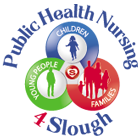VOCABULARY ACTIVITIES TO SUPPORT WORD LEARNING AND RETRIEVAL
- Sorting
Use this activity to reinforce the names of items and the categories to which they belong. For example, have a range of food items to sort into fruits or vegetables.You can make it more interesting for younger children by hiding items around the room or by placing picture cards face down so the child does not know which one they have selected.
- Odd One Out
Use a selection of items from one category and one item from another. Can the child spot the odd one out? e.g. apple, sock, banana
- Word Association Games: finding links
| Picture pairs | e.g. | sock/shoe | spade/bucket sun/moon |
| Verb links | e.g. | swims, drinks | fish swims, boy swims, drink juice, drink water |
| Describing links | e.g. | hot | hot water, hot day, hot sausage |
- Think a Link
The first person chooses an item, the next person chooses another item to go with it and so on. For example ‘sock’, ‘shoe’, ‘welly’, ‘rain’, ‘puddle’.
- Explain a Link
An extension of the game above. Ask the children to explain their link and decide as a group if the link is acceptable.
- Making Sentences
Have a pile of pictures. The first person chooses a picture and has to say a short sentence containing the target word. To help children develop flexibility several children could make up a sentence for the word. At the higher levels this could be used to explore words with double meanings.
- Silly or Sensible
The adult says a short sentence containing a target word. The child or group have to decide whether the sentence is acceptable – SENSIBLE or not – SILLY.
To extend this activity, can the children sort out the silly sentences by changing words to make more sense? Again this activity can help children develop flexibility by seeing that a silly sentence can be corrected in more than one place.
e.g. I like to eat worms
Correction- I like to eat toast
Correction- I like to hold worms
- Alphabet Names
Have a sheet with the alphabet listed. Take a category e.g. animals and then think of an animal for each letter of the alphabet. This can be really hard – encourage the children to seek help and use the opportunity to send them to another area to ask a teacher if they know the item you are stuck with.
- What is it?
Children listen to clues about the item they have to guess. Remember that this game is much easier when the items are physically present.
e.g. This is something we use to open the door. It is silver and shiny.
- Give a Clue
Role reversal of the above. Young children find it impossible not to say the name of the item, but with practice, can learn to play this game. As a group you can work together to think about which clues work well and which are not very helpful.
e.g. target word: cat
clue: it says miaow
clue: it has a tail
- How many
Pick a category and see how many words you can come up with in one minute i.e. animals, transport, parts of the body, vegetables, things you can wear. This can be done individually or in a group. Repeat this category again after a week or 2- can you beat your score?
TOP TIP: Encourage children to use strategies if they cannot think of the word they need. For example:
- Say the first sound of the word
- Demonstrate what you do with the object
- Describe what the object does: “You can eat soup with it” (spoon)
- Make a sentence up which includes the word :“I go to school in the…“ (car)
- Describe what the object looks like :“It’s got 4 legs and says meow” (cat)
- Describe what it is not : “It’s not a cat its a…” (dog)

